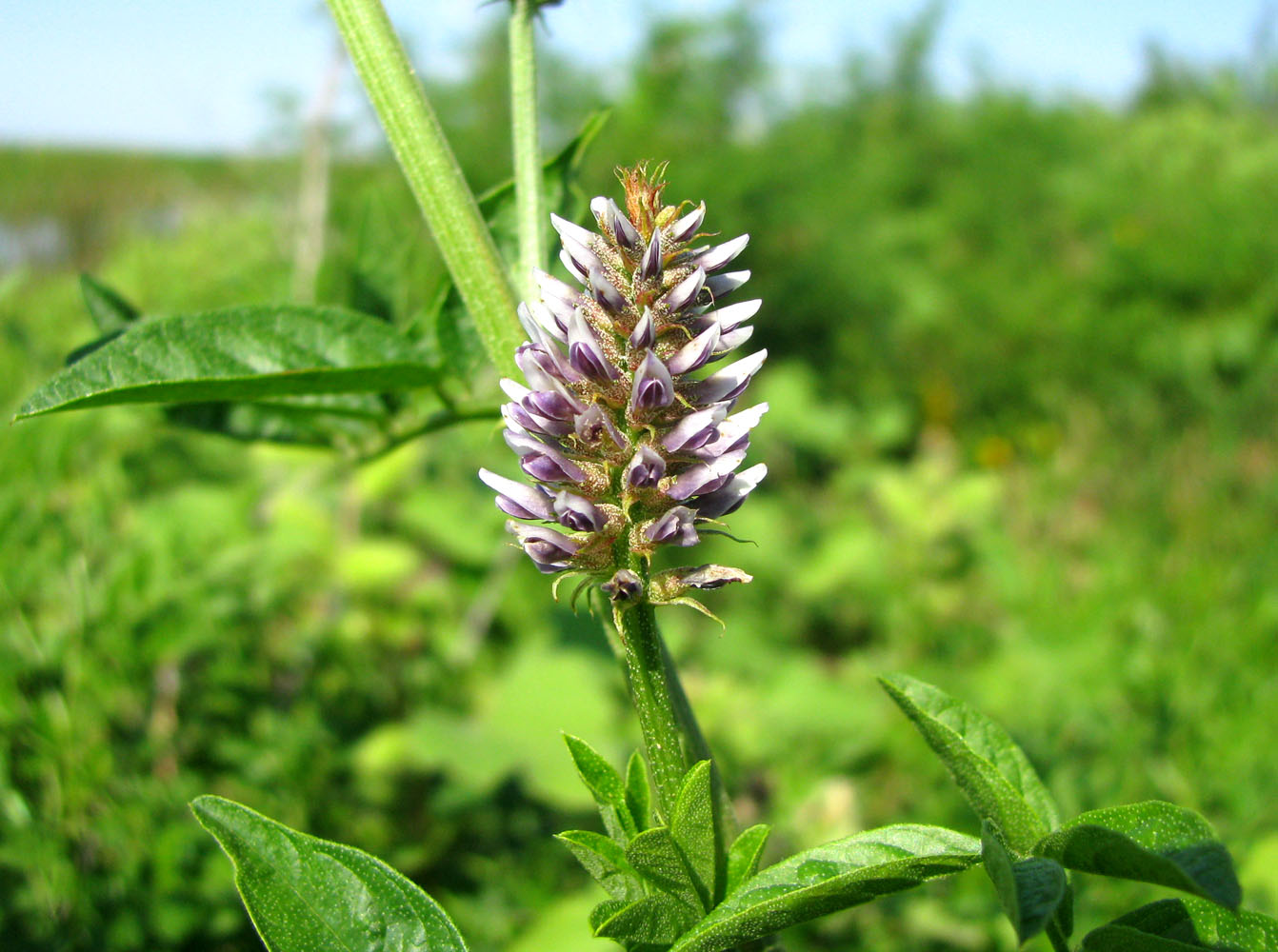Licorice
Licorice is a perennial plant with erect, slightly branched stems, 50-100 (sometimes up to 200 cm) high. The underground organs of licorice consist of a taproot that penetrates the soil to a depth of 6-8 meters and a short thick multi-headed rhizome, from which underground shoots extend - stolons (from 5 to 20 pieces, 1-2 meters long). The daughter buds are on the stolons. Above-ground shoots are formed from them. The developed system of underground organs of the plant (roots, numerous stolons with daughter buds) forms a powerful network and helps to maintain the licorice population.
The leaves of the plant are alternate, compound, odd-pinnate, 5 to 20 cm long, with 9-17 dense elliptical or ovate, shiny leaflets, slightly sticky, with a large number of glands, especially on the underside. The edge of the leaves is slightly bent down.
In folk medicine, licorice roots are used to treat coughs, pains of various origins, fevers, and stomach ulcers. The plant is used for bronchitis, tuberculosis, shortness of breath.
Licorice is included in the fees for the treatment of rheumatism, impotence, jade, and for the elderly is considered a rejuvenating and life-prolonging agent, the plant is also often found in recipes for children.
In Tibetan medicine, the roots and rhizomes of Ural licorice are used as an anti-inflammatory, diuretic and expectorant and are used for stomach ulcers, vascular diseases, atherosclerosis, some diseases of the kidneys and urinary tract, arthritis and rheumatism, poisonous snake bites, bronchial asthma, lobar pneumonia , cough. An aqueous decoction of licorice roots is used for food poisoning, especially mushrooms.
In India, licorice roots are widely used in the treatment of eye diseases, to improve vision.
In Korean medicine, licorice roots and rhizomes are also most commonly found in drug prescriptions. The plant is used in the treatment of tuberculosis, various nervous diseases and diabetes.
In Bulgarian folk medicine, licorice's roots is used for difficult urination, manifested as a result of prostate adenoma.
